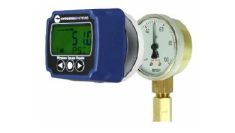Reduce Compressed Air Energy Use
Industrial Facilities – Solutions
The Situation
Compressed Dry Air (CDA) systems are one of the largest users of energy in a typical industrial plant (steam is another), accounting for up to 25% of the average plant’s energy use. In many plants, there is a significant opportunity for reducing CDA energy use. One of the most effective solutions is simply reducing system header pressure to the minimum level necessary to satisfy the entire network. Each pound per square inch reduction in pressure equates to about 2% energy reduction for CDA systems.
The Challenge
Although most equipment that uses compressed air require only 80 psi to operate, the majority of plants set their header pressure much higher. Many plants set their header as high as 125psi “just to be sure.” This translates into 15-20% energy waste. When plant managers are prompted why they do not reduce the header pressure, the answer is often “risk”. Older plants do not have sensors which monitor the CDA network and the plant manager is operating without information. Setting a higher header pressure is one way to make sure that all equipment gets the necessary air without affecting uptime.
If the plant manager were able to add networked sensor points to all point of use equipment, low-pressure alarms could be added and trends could be analyzed to reduce header pressure. However, adding pressure sensors entails cutting pipe, installing transducers, running wire, procuring PLC’s, adding I/O cards, configuring databases, and approving drawings. The cost and disruption of doing this is prohibitive for most plants.
As a result, header pressure remains high, and energy waste continues.
The Cypress Envirosystems Solution
Most CDA networks have manual dial gauges which monitor pressure at each point of use. The data is already there, however it is “stuck” in the analog gauge. The Wireless Gauge Reader is the answer to this problem. These non-invasive, wireless optical devices act as “electronic eyeballs” which clamp on to existing gauges. They install in minutes over an existing gauge without the need to break seals, do leak checks or run wires. Once installed, they optically read the pressure gauge and transmit the data to a central receiver/hub for alarming and trending from any Windows PC or Mac using a simple web browser.

Low pressure events can be detected in minutes with email or text message alarms being sent to the operator. The data can also be integrated with existing plant automation systems (via OPC or BACnet) and displayed on existing operator control stations, or integrated with compressor controllers. Data can also be downloaded in Microsoft Excel or AirMaster+ formats (LogTool) for more detailed offline analysis. With this monitoring and alarming in place, a plant operator can now reduce header pressure with much more confidence, knowing that if a low-pressure event occurs he would be notified in a timely manner. He may then set the header pressure higher or turn on additional compressors.
Case Studies
The Wireless Gauge Reader solution is applicable for just about any plant that uses CDA. Because of the low upfront cost and easy installation, the payback on investment has been around 6-12 months. The following case study illustrate the benefits and payback for a semiconductor fab.


